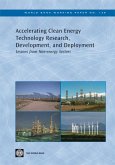E lives and for continued technological development. Over the past decades, energy supply as well as demand has been steadily increasing due to population growth, economic development and living standard improvement throughout the world. To meet rising energy demands, fossil fuels are being extensively used, which has led to continuous increase in greenhouse gas emission. It has been reported that 28% of greenhouse emission is produced during electricity generation, especially in developing countries worldwide (United States Environmental Protection Agency, 2016). Most of the electricity generation is centralized and generates power at large scale. These systems are usually situated away from end-user and connected to high-voltage transmission lines. The centralized power generation systems include conventional power plants, such as fossil fuel, nuclear and hydro. Conventional power plants lead to extensive usage of depleting fossil fuels for centralized power system. This practice heavily contributes to greenhouse emission and carbon footprint, which are not just local but a global concern. Moreover, in a centralized system, other difficulties are associated with extracting, processing, and transporting certain fuels, such as coal and natural gas. Further, large volumes of water are used for steam generation and cooling system, which finally discharge to the water source relatively at a higher temperature and reduced quantity, due to evaporation losses. In addition, enormous consumption of fossil fuel leads to shrinkage of its reserves and gradually rise in its costs.







